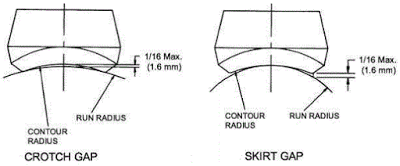PRODUCT CATEGORY
CONTACT US
- Tel: 0086-311-89642206
- Fax: 0086-311-67906676
- Mobile: 0086-15076331069 13933856228
- E-mail: sales@hbmetals.com
- E-mail: info@hbmetals.com
Forged Branch Outlet Fittings
1. Basic knowledge of forged branch outlets
Just like reinforced pad and welding saddle, the forged branch outlet is a stub-in fitting which is most commonly used as an alternative to the reducing tee. A hole is bored into the run pipe(header). The branch outlet, which is used to connect the branch pipe, either 90 or 45 degree, is stubbed into the hole and then fillet welded to the header. One end of the branch outlet should be machined to the contour of the run pipe. The other end should be manufactured to match the end connection of the branch pipe. Hence it can be categorized according to its end connection:
2. Advantages of using forged branch outlets
3. Materials for forged branch outlets
4. Size, Type and Class of forged branch outlets
|
Class of Outlets
|
Type
|
Branch Size
|
Pipe Wall Thickness
|
|
STD
|
WeldOlet
|
1/8" ~ 24"
|
STD
|
|
XS
|
WeldOlet
|
1/8" ~ 24"
|
XS
|
|
SCH 160
|
WeldOlet
|
1/2" ~ 6"
|
SCH 160
|
|
3000
|
ThreadOlet
|
1/8" ~ 4"
|
XS
|
|
6000
|
ThreadOlet
|
1/2" ~2"
|
SCH 160
|
|
3000
|
SocketOlet
|
1/8" ~ 4"
|
XS
|
|
6000
|
SocketOlet
|
1/2" ~2"
|
SCH 160
|
Views: Author:hbmetals Date:15/10/13










